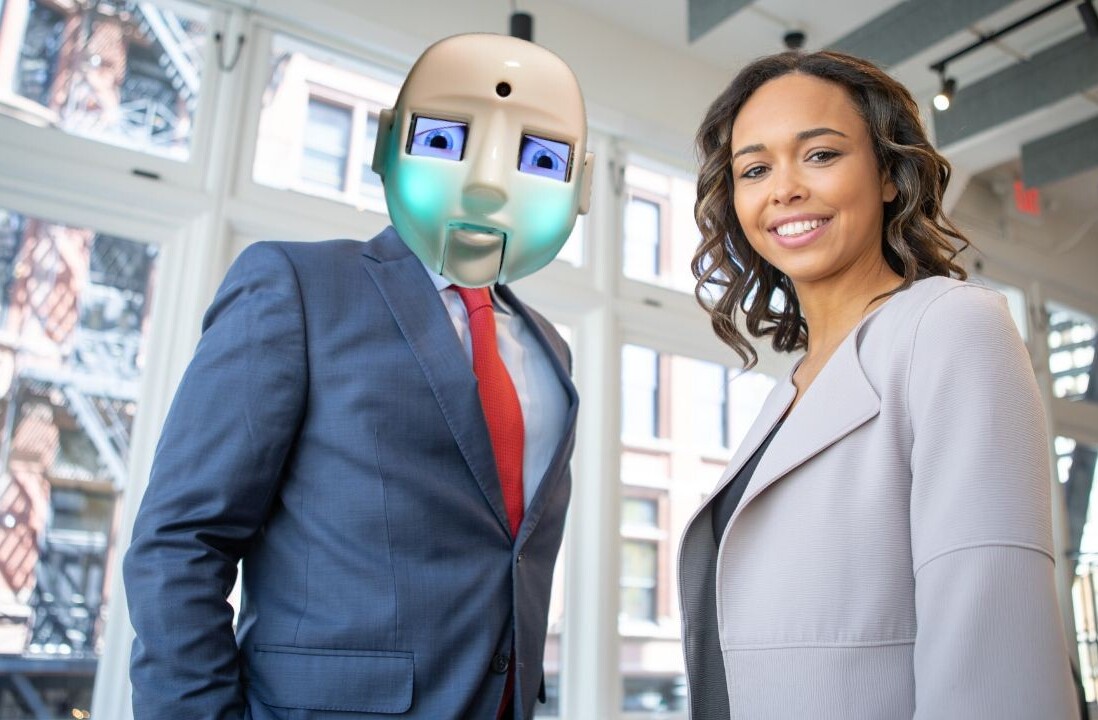
Attempting to predict and prepare for the future can be an arduous and alarming task for any entrepreneur or business. It may seem as though the risks are more prevalent than the opportunities, and it’s easy to get hung up on what could go wrong. It’s also difficult to break out of existing paradigms and imagine how things could be different.
One antidote to this self-defeating thinking style is to engage the power of science fiction. Sci-fi is an incredible way to free up the imagination and construct alternative futures. At Singularity University (SU), my colleagues and I use a science fiction visioning exercise to get our clients to start thinking exponentially. Specifically, we have our program attendees create their own sci-fi — in the form of comic books.
We begin by asking our clients to consider a current problem they’re working on, and we use sci-fi to project that problem into the future to see if they’re thinking about it in a big enough way. We construct a narrative of how the organization might change in the future. We consider how exponential technologies and trends will impact the future of the organization, and how they could possibly reposition themselves to create an ideal outcome that speaks to their mission and purpose.
It works remarkably well, so I advise you to try it for yourself.
Harnessing the power of story
Inviting people to create sci-fi narratives allows them to break out of the thought patterns that are holding them back. One of the big challenges of thinking about the future is that nobody really knows what it will look like. Using sci-fi tools, we can visualize possible futures and then decide which one is aligned with their organization’s visions, strategies, and goals.
Constructing a narrative around a company’s future vision isn’t just an imaginative exercise; it has real implications for the way that organization communicates its values. This is the narrative that draws new talent into the company and draws innovation out of current team members. Story is an effective way to do that because our brains are wired for story. We can communicate highly complex ideas through story and narrative, making them memorable and compelling.
To do this, we use what we call a “future-back” approach: we imagine possible futures fifteen years out and then work backwards to now, to figure out the next steps we need to start executing on today to make our desired future a reality. As Alan Kay says, “the best way to predict the future is to invent it.” Even if we don’t know exactly what is going to happen, once we start to visualize and create what that future might be like, we take the first step in making our visions come true.
After conducting dozens of sci-fi sessions, we’ve settled on a four-part framework that guides people to access and share ideas and insights that would otherwise be unexpressed. Let’s walk through that framework
Step #1: Construct predictions with sci-fi narratives
We start with a deep dive into exponential technologies to understand what current capabilities are being developed. Then we imagine possible futures: what might the world be like in fifteen years? How do we write the stories of characters who would live in that future? What are the business models, products, and services that make their lives possible in that future?
Sci-fi sessions don’t just connect us with a fantastical future. We want to know what real people will experience in the future. In one comic book, readers meet Tulsi, a woman working to rebuild a Central American city severely damaged by an earthquake.
Another story followed Drule, a robot dog that served as a nanny for a single mother in a story set in 2030. We saw a character named Rhoda overcome Alzheimer’s disease through brain implants, and at 101 years old, we found her traveling the world as a journalist, keeping strong and active with the aid of a powerful exo-suit that also held her cargo — including a portable home.
It’s important to think about the character development of a human living in this futuristic world. What real, human problems do they face? What are the stories of how they might overcome some of those challenges in the future?
As we tap into these challenges through fiction, we can begin to trace these narratives back to their real-world applications.
Step #2: Connect to Global Grand Challenges
An essential part of the work we do at SU is to address what we call Grand Global Challenges (GGCs). These GGCs describe major tests of humanity in areas such as food, water, shelter, and health.
As we facilitate the sci-fi exercises, we try to fold in impact to align with our Grand Global Challenges. We craft a problem statement and then look at it from a series of five questions:
- What is the problem?
- Who is facing the problem?
- Where is the problem?
- When does this problem begin?
- Why is the problem happening?
We fill in the answers with all of the assumptions about this problem. We consider the ramifications it will have in the future, through the lens of the impact it has on our character’s lives — and by proxy, on our futures.
Step #3: The STEEP framework
The third step of crafting sci-fi narratives is to apply the STEEP framework, imagining the future from the following perspectives:
- Society
- Technology
- Environment
- Economy
- Politics
What will each of these factors look like in fifteen years? Imagine how each of these areas will be impacted by technological advancements. Will Mars be colonized? Will telemedicine be common? Do we think major climate change will happen? Will climate change be reversed?
How are these factors interrelated? What will be the most defining characteristics of the world in fifteen years? These questions focus on the world at large, not just one specific business.
If you’re going to try this activity, you can write down your predictions and thoughts on your own, but an even better option is to discuss your ideas with others to gain multiple perspectives. When we do this exercise in our sessions, we have participants talk through their ideas in groups, and their conversations allow individuals to think about future implications in a deeper way than they could alone.
Step #4: Build a narrative
Finally, we turn our focus back to the individual characters we’ve developed. Considering their future world and the challenges they face, we consider: what are their human needs, fears, and pain points? Who are their friends and family? What are their lives like?
We write a story around that character, following the Pixar formula of storytelling:
- Begin the story on a typical day of the character’s life. What are they doing?
- Something happens to create a conflict. What is it?
- What are the consequences of this conflict? Describe how it escalates.
- Finally, a new event enables a resolution. How is the problem solved?
Write your own sci-fi narrative
Hopefully, the way I’ve described this exercise doesn’t sound hard and stressful. It sounds fun. It’s an opportunity to free up your imagination and come up with ideas that you would probably never think of if you were sitting in a dour brainstorming session about the future of your business.
If you see the potential of this approach, I invite you to take action: write your own future narrative, using the Pixar formula if you find it helpful. Give yourself permission to come up with crazy ideas. Free your mind, because it’s difficult to think about the future in our current constraints of reality. Bring together other people in your organization and do this together.
Remember: you’re an agent of change to create this future, and it’s up to you to imagine the future that you would like to see — and create the solutions you want to be part of. Constructing sci-fi narratives is a fascinating and fruitful way to do that.
Did you know we have an online conference about product design coming up? SPRINT will cover how designers and product owners can stay ahead of the curve in these unprecedented times.
Get the TNW newsletter
Get the most important tech news in your inbox each week.





